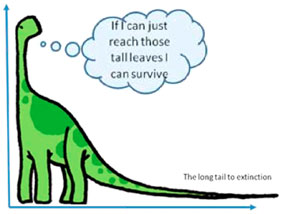
If company A builds a chip and it is better and newer than company B’s, shouldn’t company A get more market share?
Suppose company B introduced a part in January and it got a Pmark score of 100 and it sold for $150. Then in June, company A introduced a part and it got a Pmark of 150 and sold for $100. Company B, reacting to the competition, drops the price of its 100 Pmark part to $99 and the Pmark for their part went up to 120, and takes market share away from company A. Remarkable as it sounds, this is actually a true story—only the innocents have been changed to protect the names.
One explanation is that company B is better at marketing than company A. And that’s certainly a factor. But it’s not enough.

What does that leave? That the customers don’t value the technology—case in point is On2 discussed earlier in this issue.
Or, maybe they don’t believe the technology messages. Will my application REALLY run faster with company A’s part? Does it REALLY support more applications?
We asked a few people about this, and they generally said, a few more points of performance don’t mean that much to them—the “good enough” scenario that’s fueled Intel’s IGP success. That’s understandable for the low-end Value and Enterprise segment, but for the Performance segment and the Enthusiast segment that is heresy, the unthinkable, the pixel god will come down and smite thee for saying, for even thinking such things. Why your entire family could be turned into turnips.
Brand loyalty is another factor (maybe it’s a subset of marketing skills) and if things are close enough then the brand loyalty influence will kick in. We asked a few folks about that too. And when brand loyalty was a factor, the difference had to be 2x the performance for the same price. Those are customers you’re never going to get. Brand loyalty is largely due to people having their image and ego too tightly associated with a product, letting, or maybe hoping the brand identifies them.
Here again we find a strange anomaly—the brand outweighs the technology.
Consumers, OEMs, and ODMs, seem to assume that of course the technology will be better with every generation. And of course there will be new feature sets with every generation. And certainly the price will be the same or go down. Without necessarily invoking the mantra of Moore’s law they live it, understand it, and expect it. And so technology gets neutralized. Technology isn’t the differentiator the developers had hoped it would be. It’s not that technology is not a factor; it’s just not THE factor.
But you can’t quit. Company A can’t stop innovating and rest on their laurels, assuming they can just rebrand and reprice last year’s parts. Eventually the industry will run away from you. A new operating system will show up, or a new API, or a new game, and you won’t be able to support it. You’ll be left with the long tail customers and even they will one day abandon you. And if you couldn’t get paid for your technology when you were a leader, what do you think your selling argument will be with the long tails?